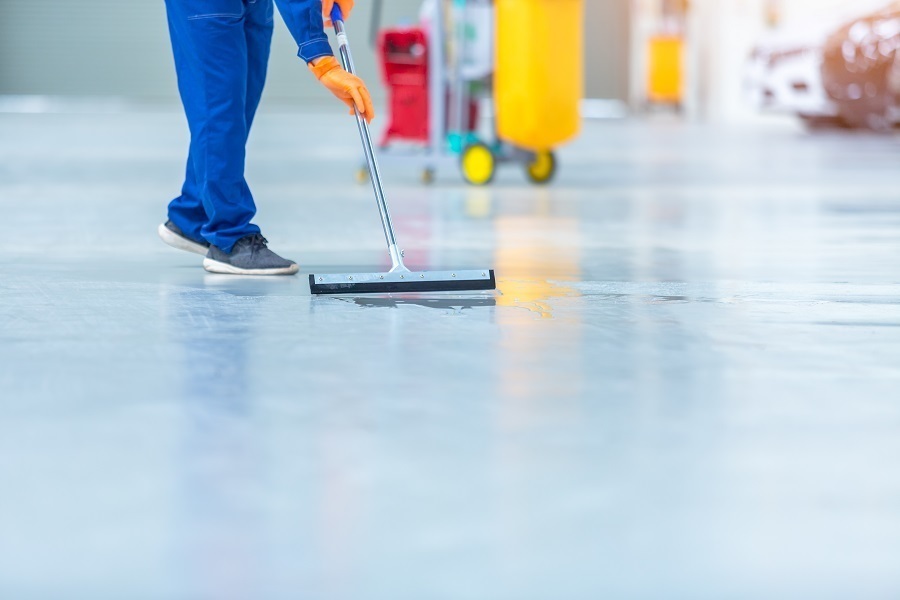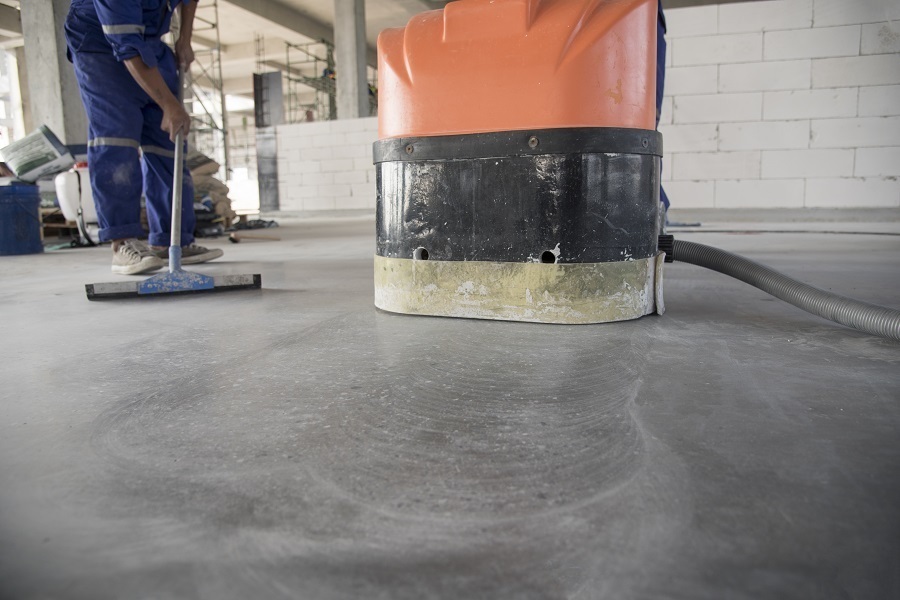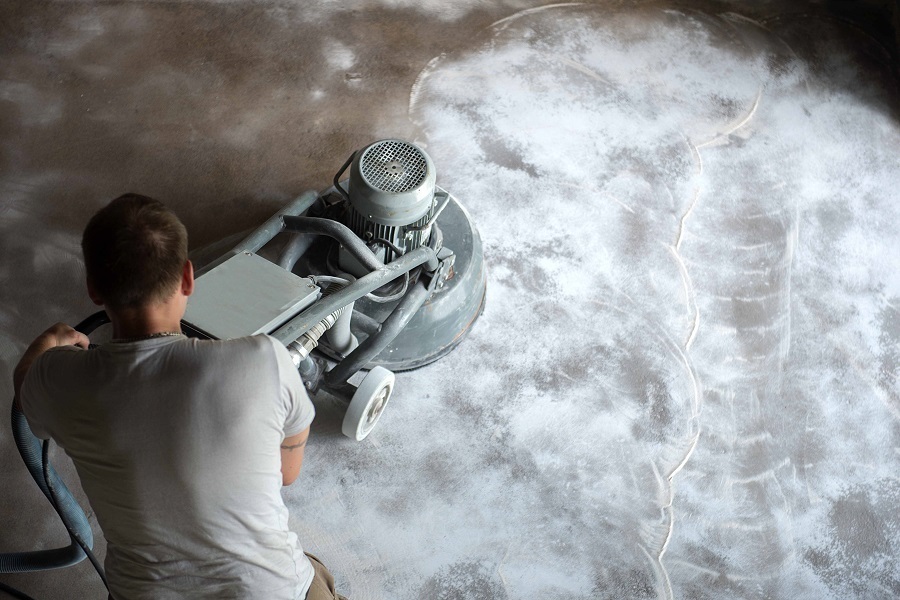Last updated on
Use these maintenance tips if you have epoxy coated floor in your home. Some of these are really eye-opening. Read on!
Epoxy flooring is an incredible alternative for residential and commercial flooring. Due to its durability and anti-slip features, epoxy coating is reliable and long-lasting, making it an excellent choice for homeowners and businesses alike. Even though epoxy is tough, it’s still not indestructible. After installation, it is imperative to perform regular maintenance to ensure your epoxy coating lasts as long as possible.
Below are some tips for maintaining your epoxy flooring to get the most out of your investment.
What's Inside
Ensure the Floor is Dirt and Grit-Free

Heavy equipment, machinery, and vehicles might damage your epoxy flooring over time when parked or placed in the same spot, or continually dragged across the floor. Regularly clean the floor and clear any sand or dirt from it to prevent scratches from ruining your epoxy floor. To clean your garage floor coatings, use a shop vacuum attached to a soft brush or a soft bristle broom.
The amount of dirt and grit that is tracked onto your floor will determine how regularly you should vacuum the floor. Be cautious when moving or sliding heavy equipment across the floor as that may damage the epoxy coating.
Prevent Damage to Your Epoxy

While epoxy flooring consists of numerous layers of coatings that make it strong and durable, it can still sustain damage. One way to prevent damage to your epoxy floor is by placing soft mats under motorcycle and bicycle kickstands in your garage. Computer mouse pads are also great for this job. Also consider placing protective mats under any furniture that could potentially scratch your epoxy flooring.
If you need to lift large loads with moving jacks on your floor, lay plywood under the jack stands. If you need to weld on top of your epoxy floor, use a welding mat to shield the floor from the welding heat and splatters. Epoxy is highly resistant to scratches, but taking the necessary steps when working on epoxy floors can help avoid damage. You can also add a high-quality household floor wax for added protection, added shine, and to ensure easier cleaning.
Treat Stains Appropriately

High-quality epoxy does not stain easily, compared to other floor coatings. However, if you notice stains on your floor, immediately take action by using the right treatment before the stains set in. Epoxy floors are generally water-resistant, therefore, it is simple to clean them when fluid spills happen. Be sure to clean up any spilled fluids as quickly as possible.
For messy spills, try not to use soap-based home cleaners. These cleaners can create a fog on the epoxy flooring that will build up after some time. You don’t need soap to clean epoxy floors: a good mop or a deck-scrubbing brush with soft fibers and warm water will do the job.
Keep Sharp Objects Away
While epoxy floor coating is often durable and highly resistant to scratches and puncturing, it’s still necessary to keep sharp objects away from the floor. Avoid sliding any objects that may puncture or scratch the floor coating, as liquids may eventually get into the scratches and damage the floor. Be extra careful when moving your car or machinery on and off the floor.
Perform Routine Maintenance Cleaning
Similar to other floors, epoxy requires simple maintenance to remain glossy and aesthetically satisfying. Fortunately, epoxy coatings are incredibly simple to clean. Minor maintenance every few weeks will prevent huge messes from accumulating on your epoxy floor, making it look and perform better over time. It also makes annual or heavy cleaning jobs much easier.
Use an industrial dry/wet vacuum cleaner or broom to pick up any debris or dust. A commercial dust mop or a soft-bristle broom are other great choices for routine epoxy floor maintenance since they won’t scratch the smooth surface. Color chip epoxy floors will also reduce the amount of cleaning you need to do since it’s harder to see everyday dirt and scuffs on a multi-colored surface.
Spot Clean as Necessary
You don’t have to clean the entire epoxy floor weekly. Instead, you can spot clean specific areas that need attention. For instance, if you have areas on your floor with dry dirt from getting in and out of your car, simply vacuum or sweep the dirt away from those areas. If you have spilled liquids, remove the solid debris and dirt that has accumulated first and then clean the wet area with a degreaser and a garage towel.
After that, you can mop the area using hot water to give it a thorough clean. Be sure to avoid scrubbing hard when removing stains. For rust spots, use a detergent-free soap and water, or a rust-removing agency for stubborn areas.
Remove Chemicals Properly
Chemicals, regardless of the source, must always be cleaned from your epoxy floors immediately. Even though they are stain-resistant, chemicals such as antifreeze, gas, motor oils, and even some home chemicals can damage the floors if left for too long. All-purpose cleaners should also be cleaned away as quickly as possible. Avoid battery acid on the floors as it quickly discolors and damages the floor, as well as the concrete below.
Chemical exposure in industrial environments can also cause smells, discoloration, allergic reactions, and even respiratory issues. It’s always best to have a neutralizing agent around to avoid unwanted reactions whenever you have any type of chemical spill on your epoxy floor coating. Use the agent first, then use water and cleaning cloth or mop to remove the remaining chemicals or fluids.
Get Expert Help for Professional Cleaning

If you cannot get rid of stubborn stains, cloudiness, or have a large area to clean, contact a professional floor cleaner for help. Epoxy floor experts will help you choose the correct products and will clean and polish your floors fast and efficiently, making them look as splendid as they did when they were first installed.




